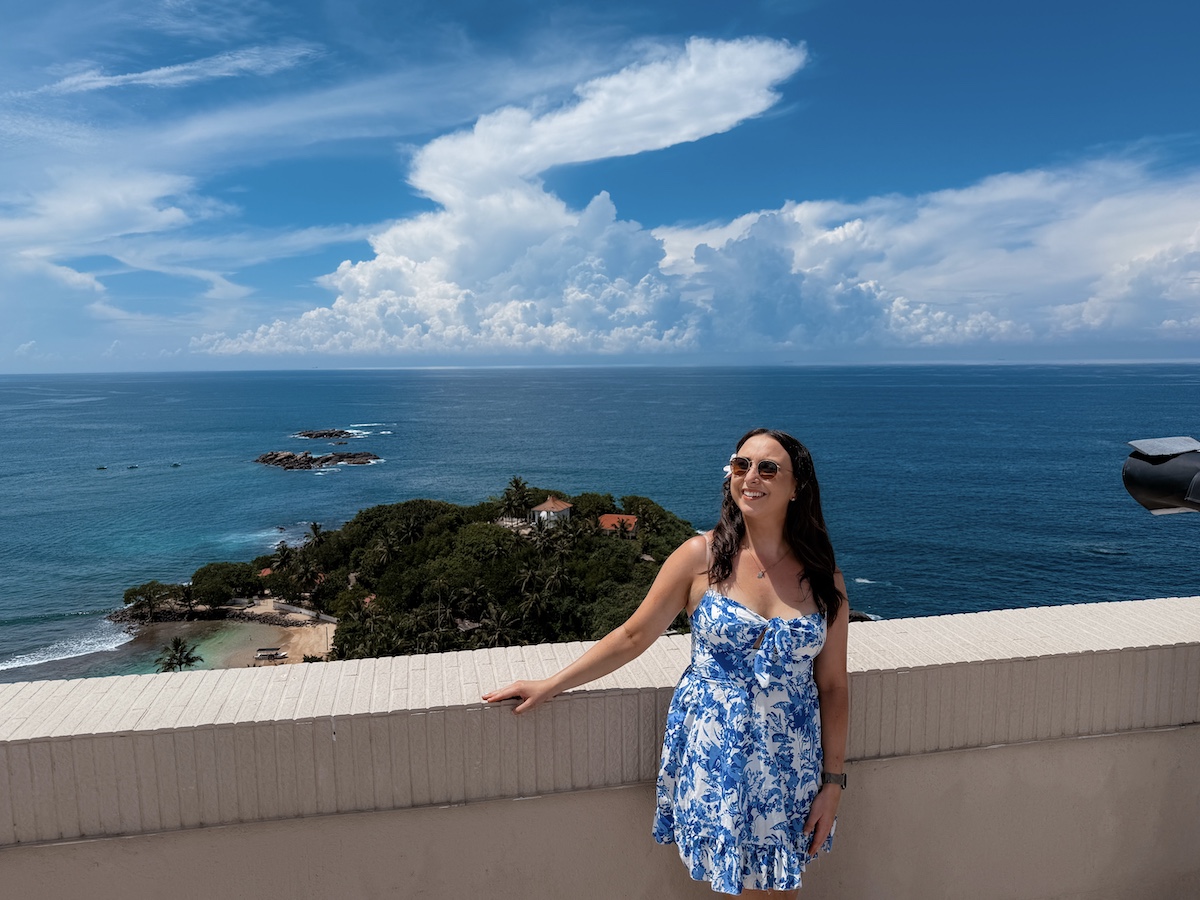From the moment I stepped out of Bandaranaike International Airport, I was hit by a wave of tropical warmth and colour. Sri Lanka is one of those places that quickly pulls you in. This country has a mix of ancient ruins, misty mountains, jungle safaris, and golden beaches, all wrapped into one compact island. If you’re visiting for the first time and don’t know where to start, this guide covers both the must-visit places and some you might not have heard of yet.
Travel Resources for your Trip to Sri Lanka:
✈️ Buy your return flights to Sri Lanka.
🏨 Find the best deals for your accommodation in Sri Lanka.
🚕 Book an airport transfer to your hotel with Welcome Pickups.
🎟️ Book the best tours with GetYourGuide in Sri Lanka.
🛅 Purchase your travel insurance to travel without worries.
💳 Make your transactions in Sri Lankan Rupees (LKR) and avoid foreign fees with Revolut.
📲 Stay connected with an eSIM card and enjoy a non-stop Internet connection during your trip to Sri Lanka. Don’t forget to enter my promo code JETOFFWITHJESS for a 15% discount.
Must-See Highlights & Hidden Gems
Galle Lighthouse:
Galle Lighthouse is one of the most photographed spots in Sri Lanka, Perched at the edge of the ramparts with the Indian Ocean behind it, the lighthouse is especially beautiful at golden hour. It’s a great place to take a slow stroll, watch the waves crash against the rocks, and see locals gathering for cricket matches or street food nearby. For first-time visitors, it’s the perfect spot to soak in the coastal charm of Galle while snapping that classic Sri Lanka photo.
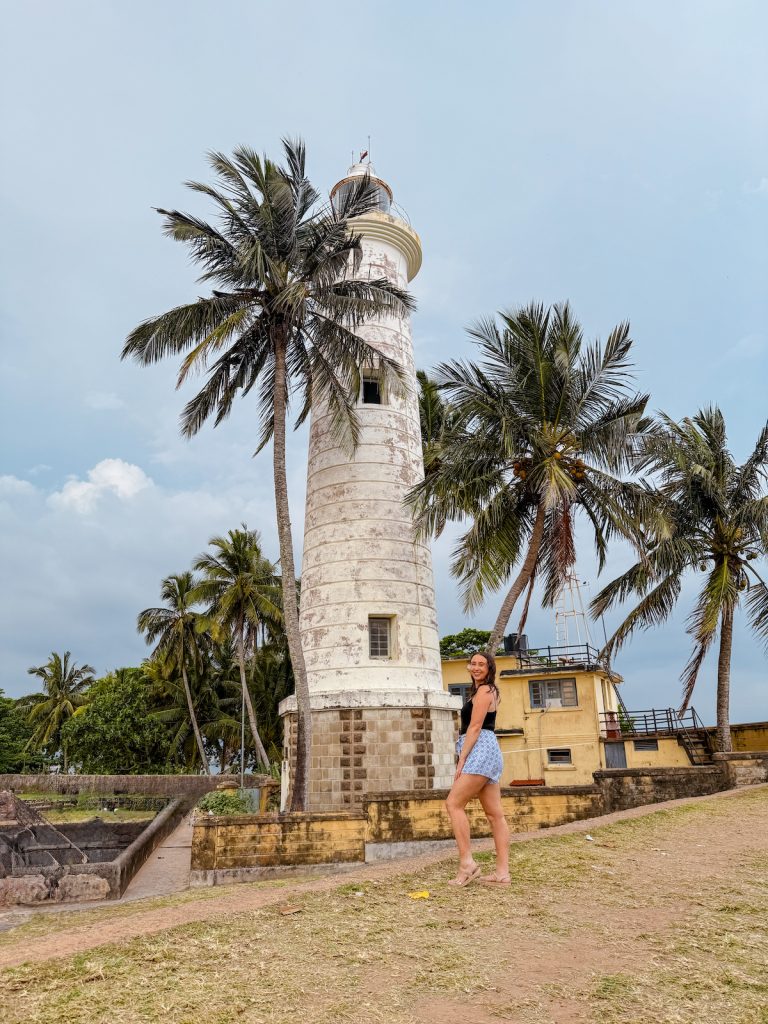
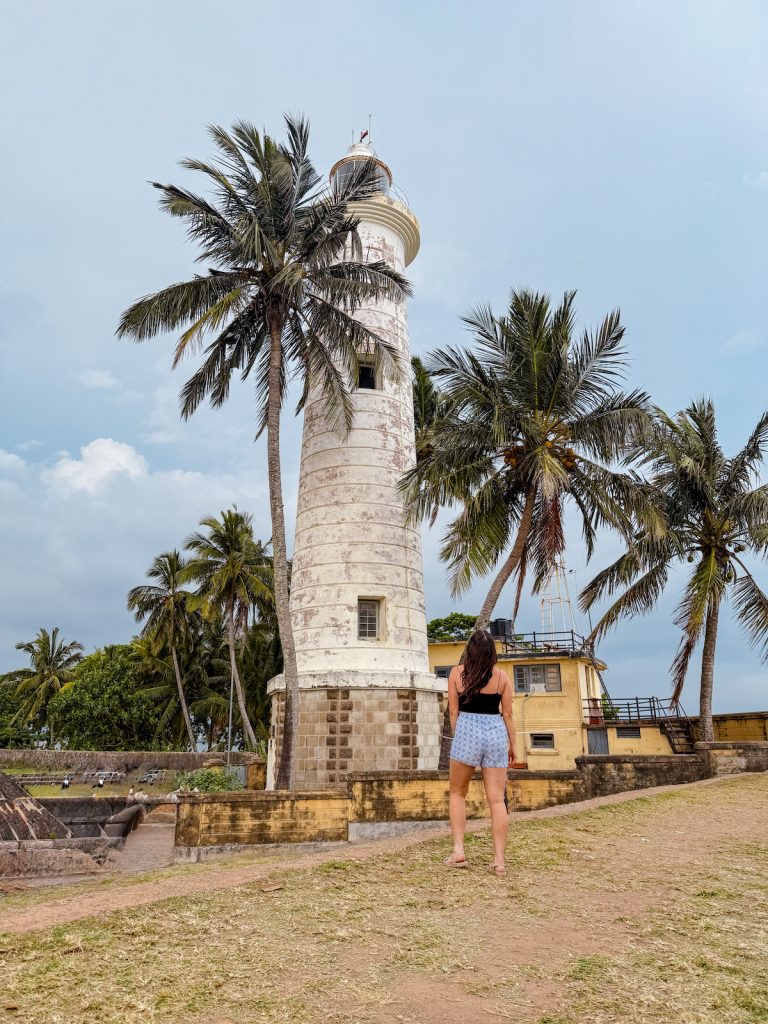
The Iconic Train Ride (Kandy to Ella):
No trip to Sri Lanka is complete without experiencing the famous train ride through the hill country, often described as one of the most scenic rail journeys in the world. The route from Kandy to Ella winds through misty tea plantations, rolling hills, and waterfalls, with open doors and windows giving uninterrupted views. While it’s not a fast journey, that’s part of its charm and you’ll pass villages, wave to locals, and watch the landscapes slowly transform. Booking reserved seats in advance is recommended, but even in second or third class, the ride offers a truly unforgettable glimpse into the heart of Sri Lanka.
This was one of my favourite things we did in Sri Lanka but you must prepare for a long wait for the train. Check the timetable and make sure you plan to wait a while for the train. If you don’t have time to stay on the train for the entire journey you can stop off at different destinations like Demodara. Also please make sure you stay safe when on the train. Most people will try to get the Instagram picture leaning out of the train. Lean forwards only as there are many tunnels and trees along the route so you need to see these in advance. Below are my top tips when planning to go on this train ride:
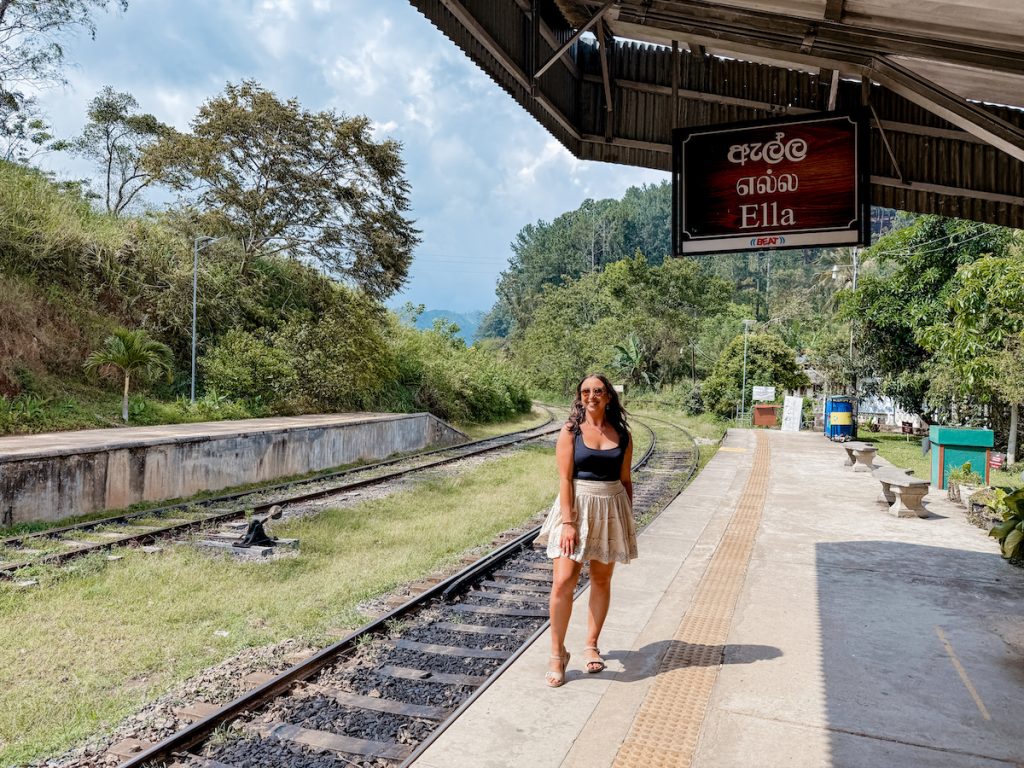
Best Route:
Kandy to Ella (full route – 6 to 7 hours, most scenic)
Nuwara Eliya (Nanu Oya) to Ella (shorter, ~3–4 hours)
Best Seats:
Right side for Kandy → Nuwara Eliya views
Left side for Nuwara Eliya → Ella views
Open doorways are amazing for photos (if safe)
Classes:
1st Class: Air-conditioned, reserved seating, closed windows (less photography freedom)
2nd Class Reserved: Open windows, comfortable seats, great balance of comfort & views
3rd Class: Budget-friendly, local experience, can get crowded
Booking:
Reserve seats in advance via Sri Lanka Railways, 12Go Asia, or a local travel agent
Tickets often sell out weeks ahead in peak season
Pro Tip:
Bring snacks, water, and your camera charged — this is a slow journey, but the views are what make it special.
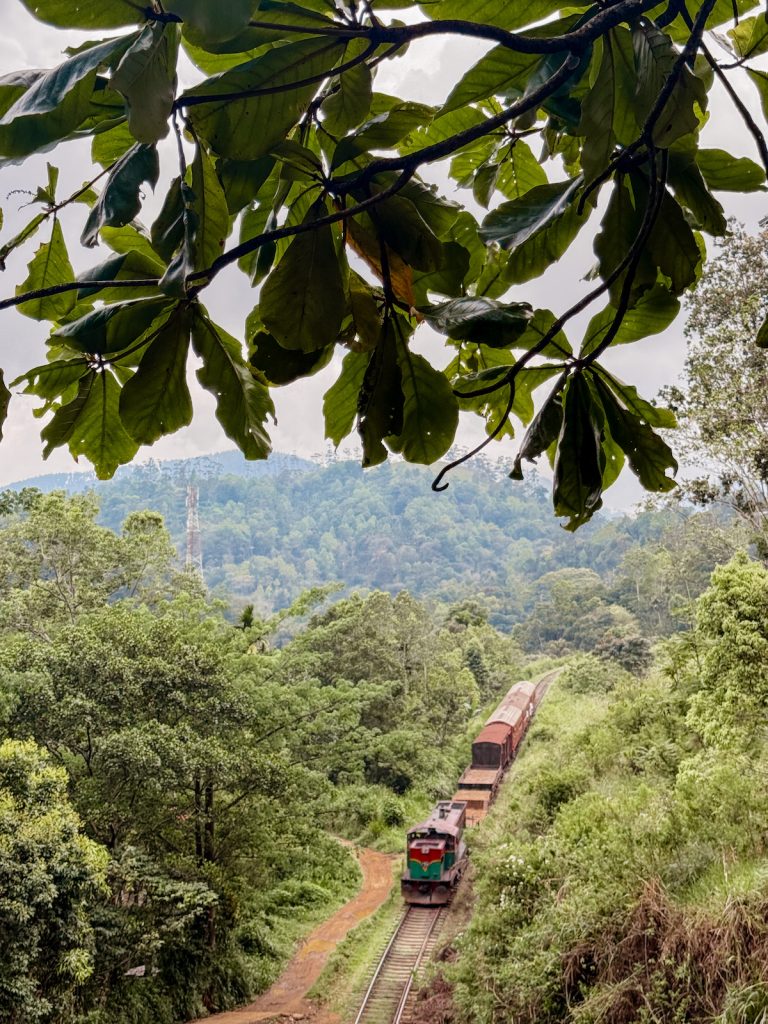
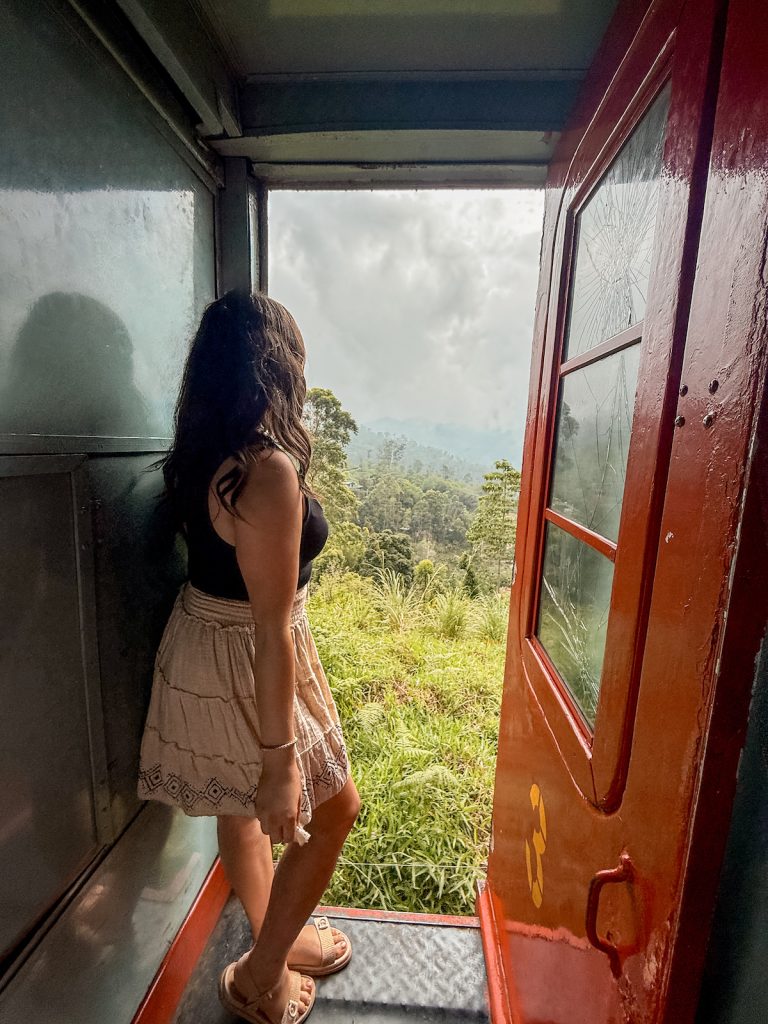
Pidurangala Rock:
Everyone talks about Sigiriya Rock, but just across from it is Pidurangala; the more adventurous and less crowded alternative. The climb is short but steep, with around 500 uneven steps, and you start by passing through a small temple (shoulders and knees must be covered). According to tradition, the mastery here dates from the arrival of Kassapa, when the monks who were then living I Sigiriya were relocated to make too for the royal a palace.The king provided new dwellings and a temple at Pidurangala to compensate them. It’s about a 15 minute summit to the top and it’s a tough climb. At the top, you’re rewarded with panoramic views and the best view of Sigiriya itself. I recommend going at sunrise for that perfect golden light. It is becoming more popular as a sunrise hike so most likely there will be a lot of other tourists there, so just keep that in mind.
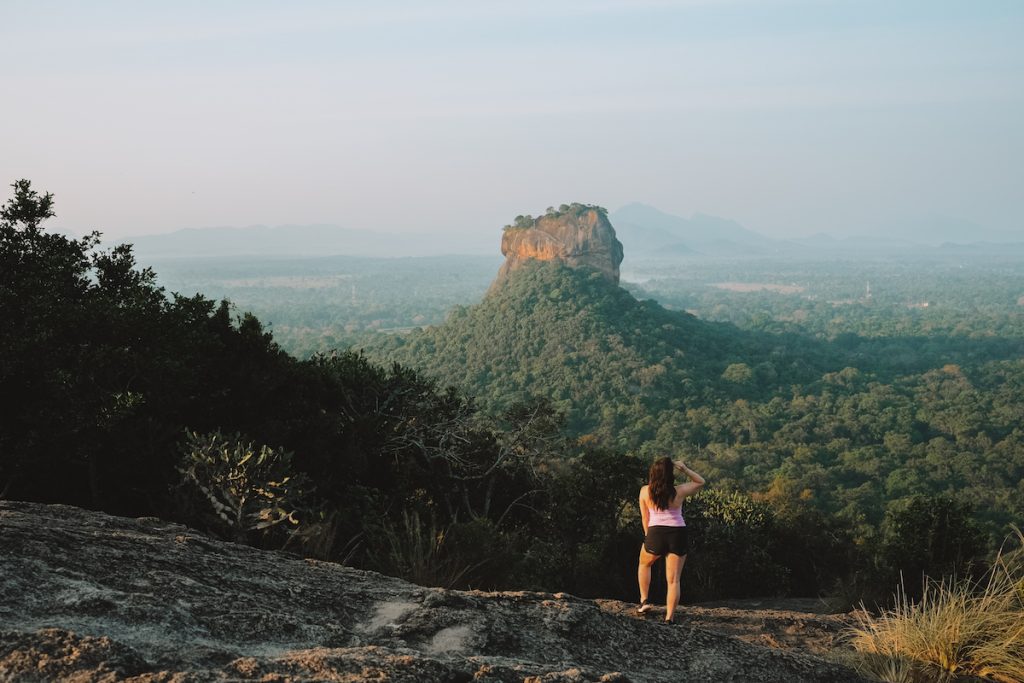
Tea Plantations in Haputale:
The hill country around Haputale and Bandarawela feels like a different world! The cool air, rolling tea estates, and quiet villages nestled into the hills are incredible. We toured a working tea plantation named Damro and we learned about the entire process from plucking to packaging. Damro Tea factory was founded in 1841 and spreads across 1,200 acres with more than 1,000 workers. All their tea leaves are hand picked and each worker picks 18kilos a day! In tea making there are 6 stages; plucking, withering, rolling, oxidation, and drying, followed by sorting and grading. It as so interesting to see this how each of these stages are carried out in the tour of the factory. I highly recommend this especially as Sri Lanka is the 3rd largest exporter of tea in the world.
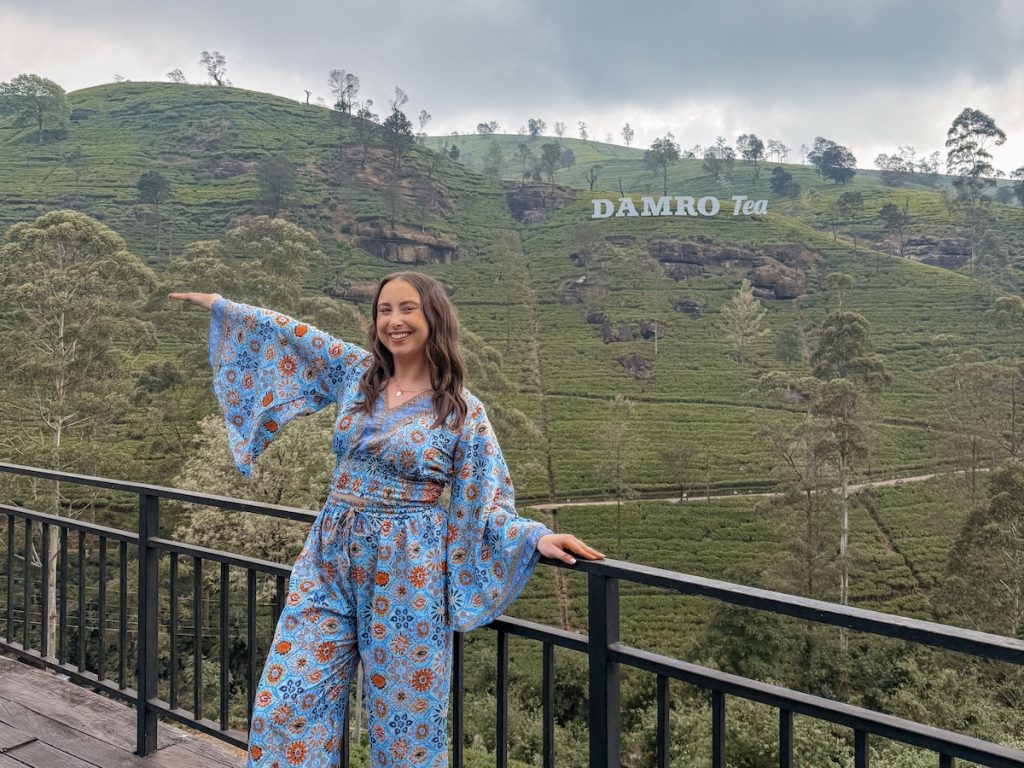
I have a tea obsession (as an Irish woman) so I was so excited that we got to have a tea tasting at the end of our tour at Damro tea factory. There were 5 different types of black tea to try which all differed in strength. They also make golden tea, white tea and red tea. White and golden tea are the best quality and actually are made from a different plant (red leaf) and process. I had never tried one of these teas so it was a nice experience. The factory send in tea tasters to check the quality before sending the bags off to auction. Every 24 hours, 2,000 kilos of tea Is made per day at Damro.
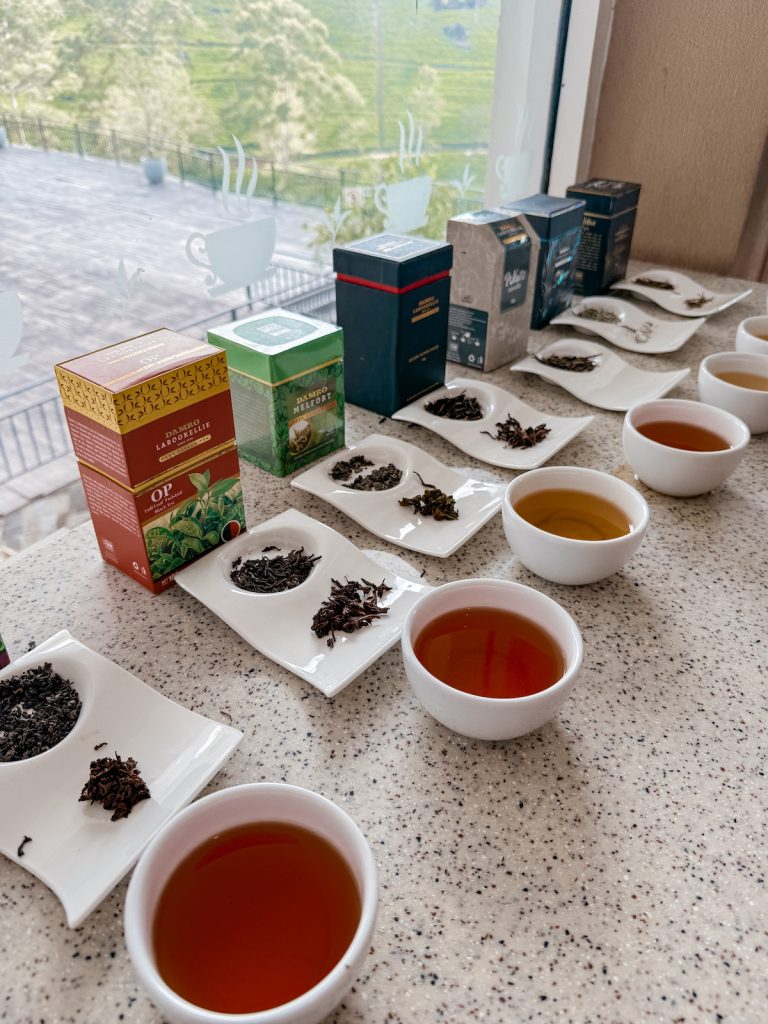
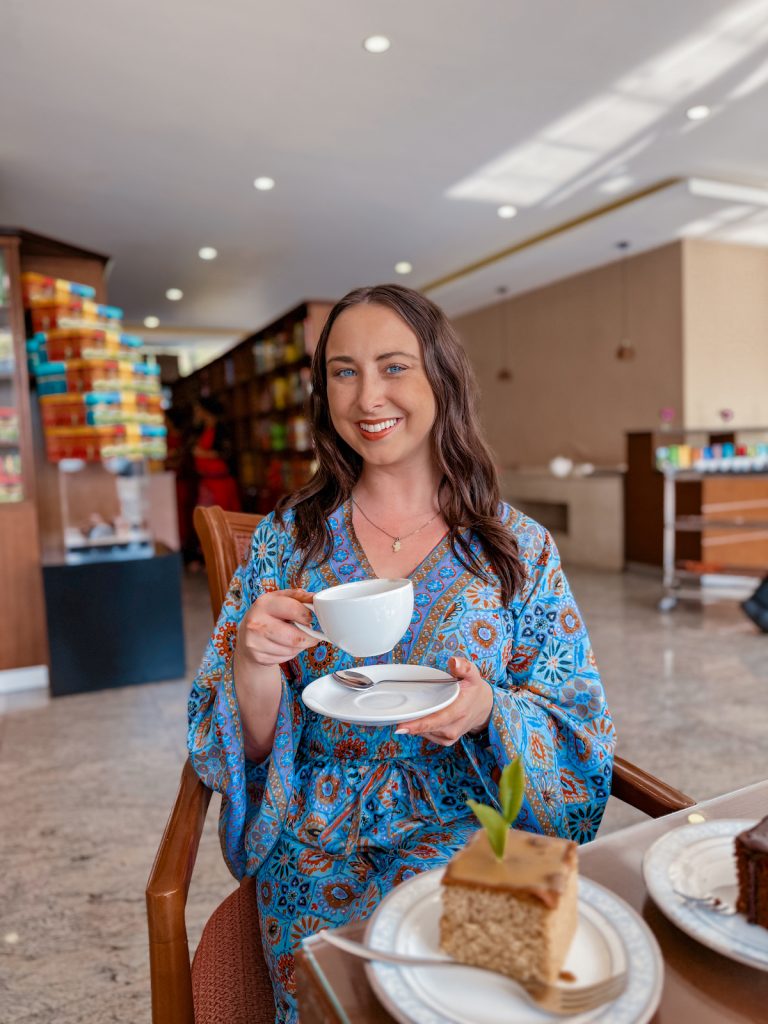
Diyaluma Falls:
Diyaluma Waterfall is the second highest in Sri Lanka, but what makes it unforgettable is the chance to swim in the natural pools at the top. After a short hike through forest and farmland, you reach a series of cascading rock pools, all with views out across the hills. If you’re after that dreamy Instagram moment, this is where you’ll find it. But it’s also raw and real: bring proper shoes, water, and respect the edge.
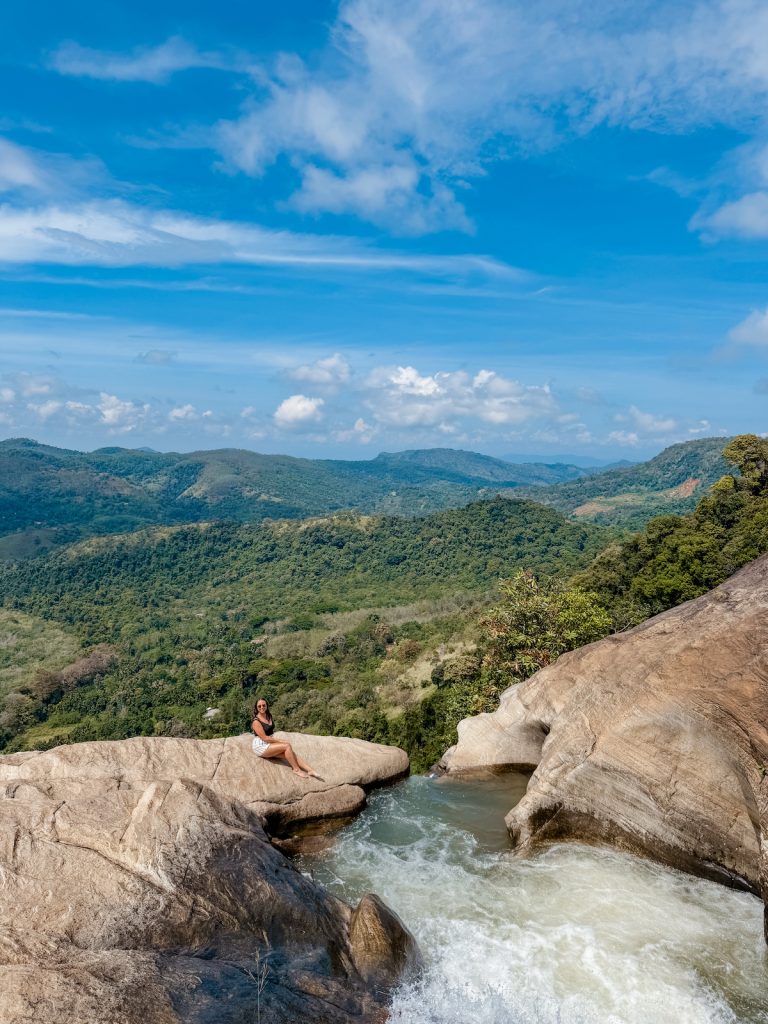
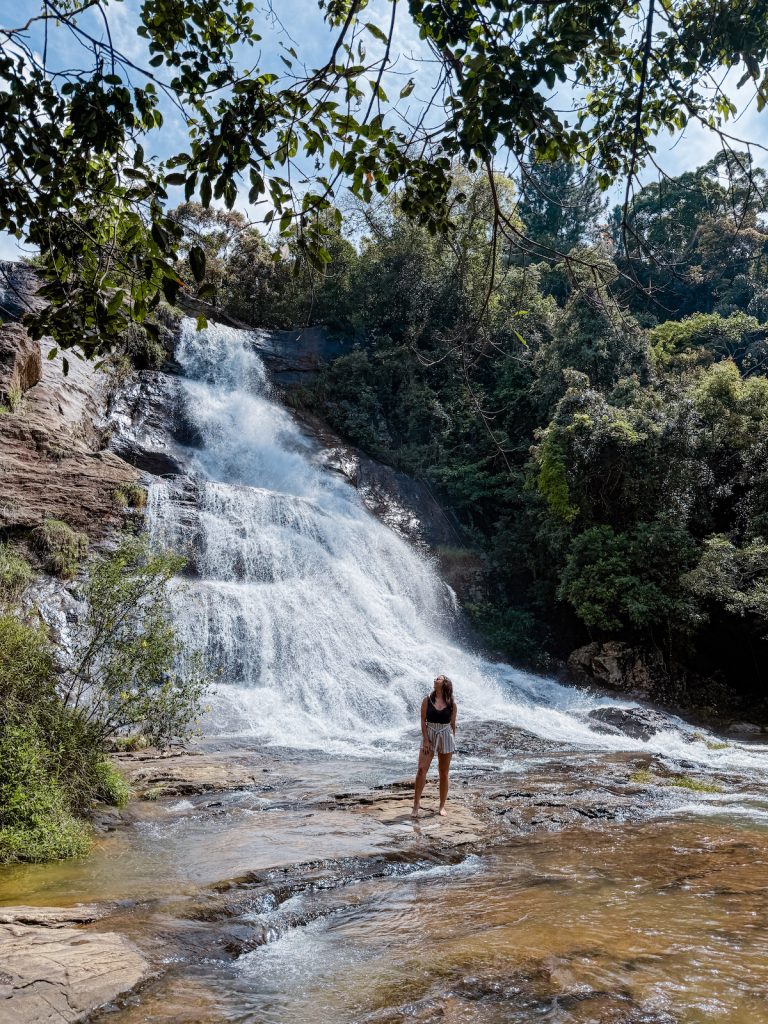
Galle Fort:
Our trip finished trip in Galle, and it felt like the perfect place to end an amazing adventure in Sri Lanka. The old fort area, with its cobbled streets and pastel shopfronts, is one of the best-preserved examples of colonial architecture in Asia. But it’s not just a museum, it’s alive with art galleries, independent cafés, and street vendors selling handmade jewellery. Watching the sun dip below the ocean from the fort walls is a memory I’ll carry with me for a long time.
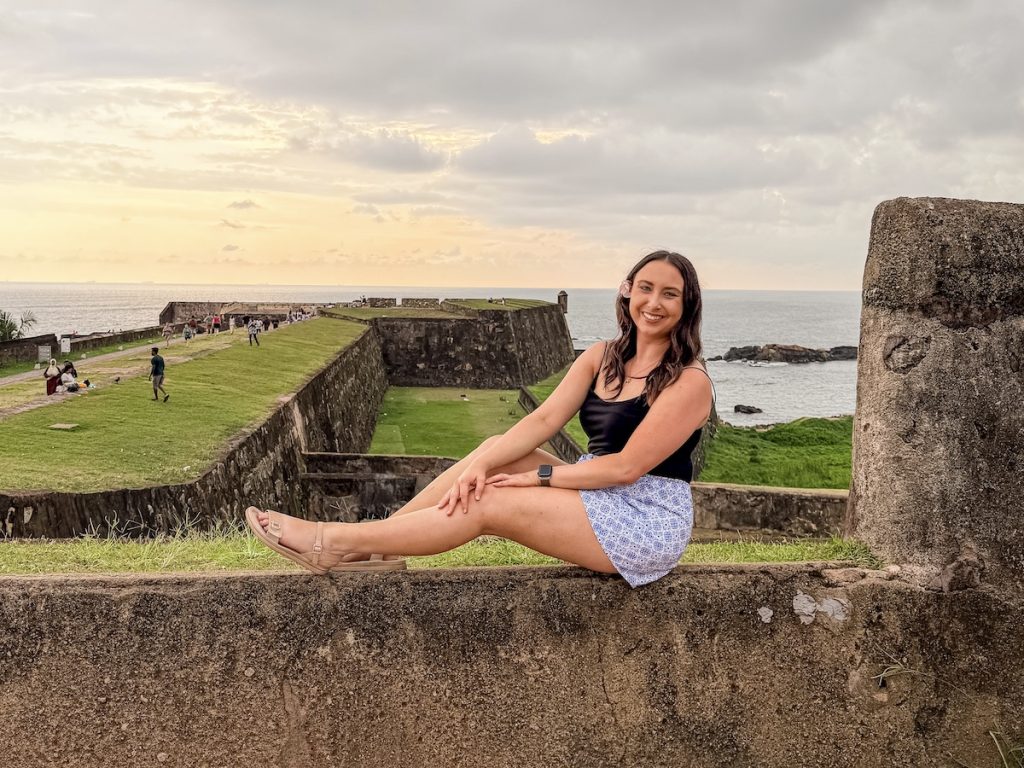
Elephant Safari & Elephant Road:
This was one of the biggest highlights of my trip. We did a safari in Habarana, and depending on the season, you might visit Minneriya, Kaudulla, or Eco Park which are all part of a migratory route for herds of wild elephants. If you don’t have time to spend a day at a safari, you can drive along B35 route and most likely see an elephant crossing the road. It is not guaranteed but if you do see one, it is such a magical experience. I saw one at night for the first time and again the next morning when we were driving out of Habarana which was so lucky! It is important to remember that these are wild elephants so when you encounter one on the road, proceed with caution and keep your distance. Admire the moment from afar but it is really spectacular to see.
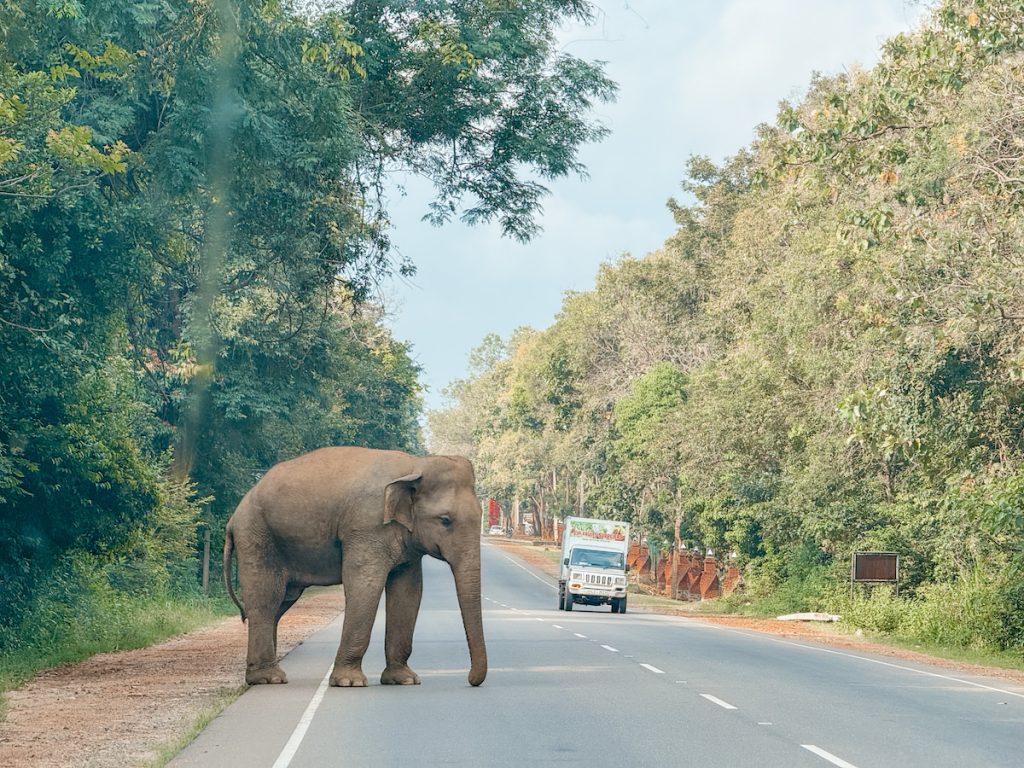
Authentic Village Tour:
One of the most unexpectedly moving parts of the trip was a village tour in the Habarana area. We travelled by catamaran to a small rural village where we met local families and enjoyed a home-cooked Sri Lankan meal. It wasn’t just about “seeing how people live”, it was a genuine exchange. Learning how they cook, farm, and celebrate gave depth to the trip that no hotel or tourist site ever could. The area was so beautiful and getting involved with the community in their cooking was something special. I learned how to skim a coconut and make rice the traditional Sri Lankan way.
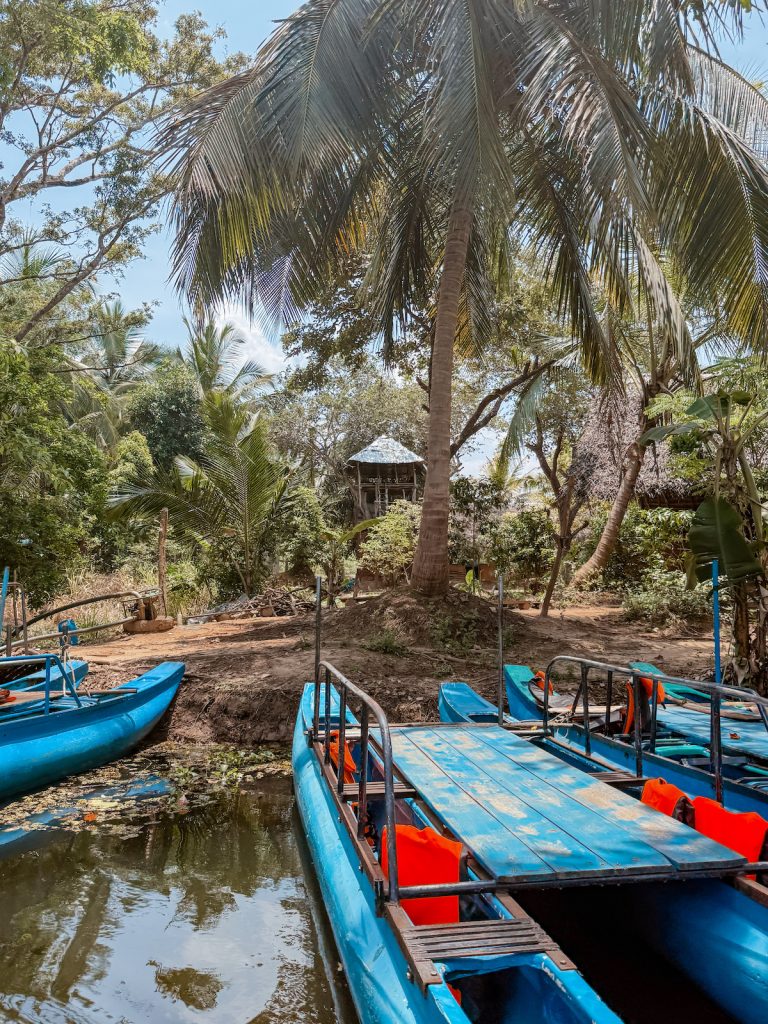
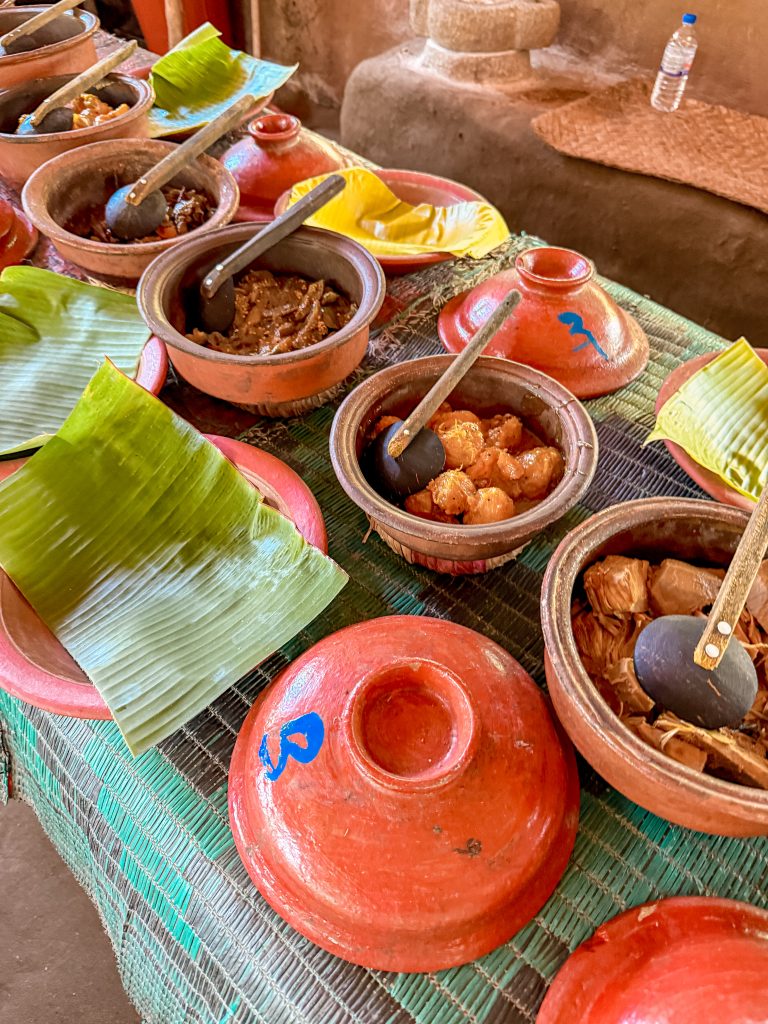
Colombo Lotus Tower:
Too often skipped in favour of more rural escapes, Colombo pleasantly surprised me. From colonial-era gems like the Dutch Hospital to the futuristic Lotus Tower stretching into the skyline, the city is an eclectic blend of history and ambition. If you’re into architecture or street photography, the Fort district is packed with hidden details. And for something more serene, the Geoffrey Bawa-designed Lunuganga estate offers a look into Sri Lanka’s most influential architect’s mind, a peaceful garden retreat away from the urban buzz.
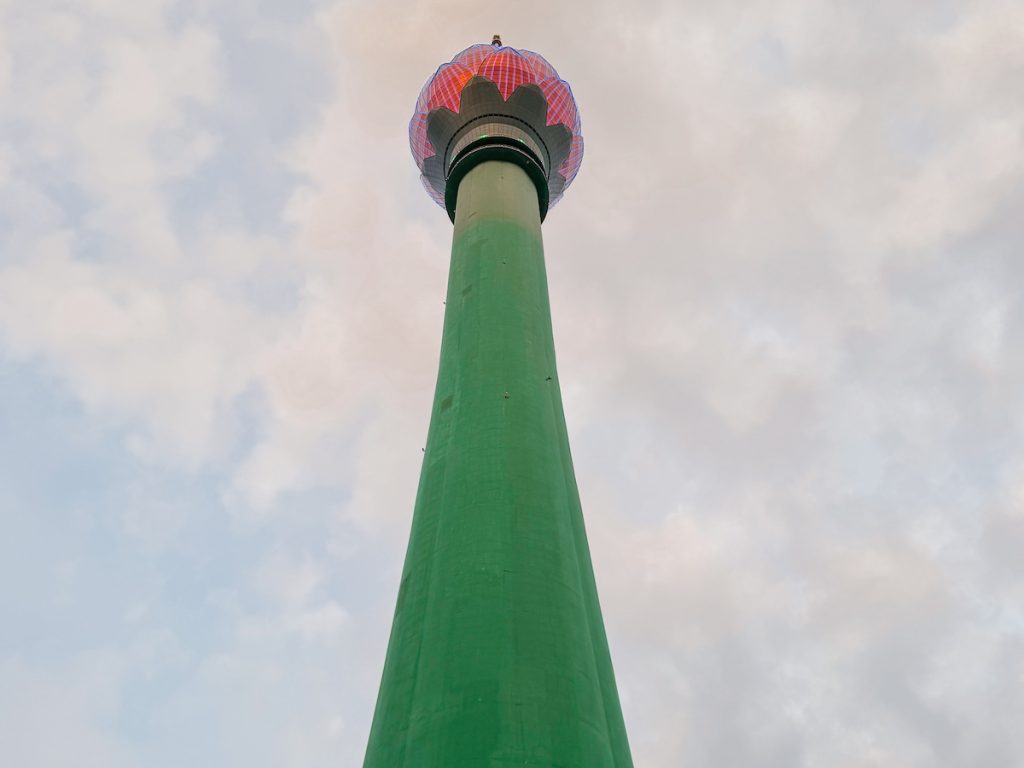
9 Arch Bridge:
Hidden in the lush hills near Ella, the Nine Arch Bridge is one of Sri Lanka’s most iconic sights, and for good reason. This colonial-era railway bridge is surrounded by dense jungle and tea plantations, making it an incredibly photogenic spot. Time your visit for when the train is passing (ask locals or check the schedule). Then you’ll get that picture-perfect moment of the iconic train curving across the arches. You can reach the bridge with a short hike through tea fields or by tuk-tuk, and there are small cafés nearby where you can watch the trains go by with a fresh king coconut in hand.
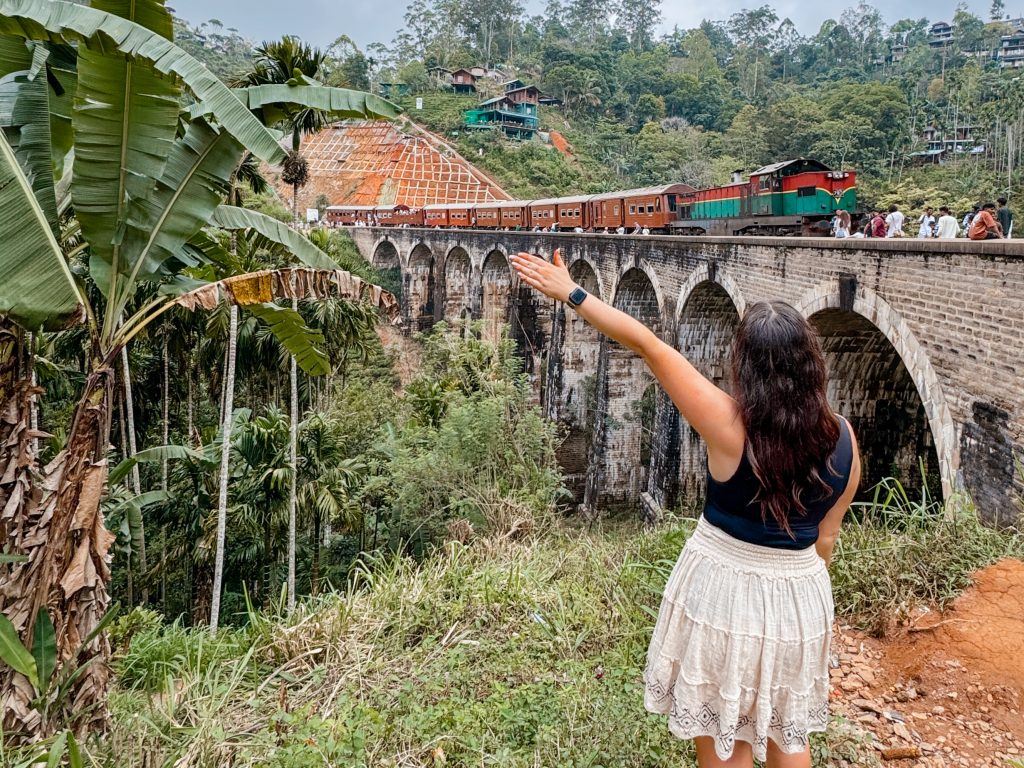
Frequently Asked Questions:
What is the best time of year to visit Sri Lanka?
Sri Lanka has two monsoon seasons, so the best time depends on where you’re travelling. For the west and south coasts (Colombo, Galle), December to April is ideal. For the east coast, May to September is best. The Cultural Triangle and hill country can be visited year-round.
How long should I spend in Sri Lanka for a first trip?
If it’s your first visit, 10–14 days is perfect. This allows enough time to explore Colombo, the Cultural Triangle (Sigiriya, Polonnaruwa, Dambulla), the hill country (Ella, Haputale), and the southern coast (Galle and nearby beaches).
Do I need a visa to visit Sri Lanka?
Yes, most travellers need an Electronic Travel Authorisation (ETA) before arrival. You can apply online through the official Sri Lanka ETA website. Processing is usually quick, but it’s best to apply at least a few days before departure.
What is the currency used in Sri Lanka?
The Sri Lankan Rupee (LKR) is the local currency. ATMs are common in cities, and card payments are accepted in most hotels and restaurants. Carry some cash for rural areas, local markets, and small purchases.
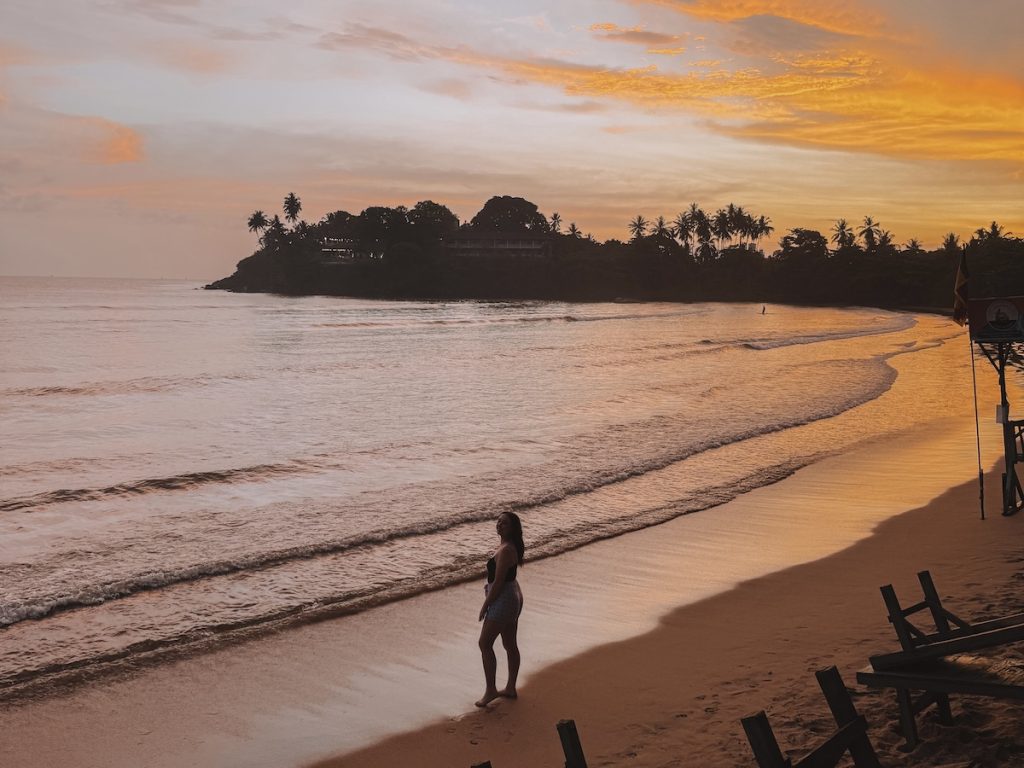
Conclusion:
Sri Lanka has such an incredible diversity of experiences packed into one island. For a first-time trip, this mix of cultural landmarks, natural wonders, and genuine local interactions gives you a real sense of what the country is all about. Come curious, travel slow, and don’t be afraid to veer slightly off the tourist trail because that is where the magic really happens.
Of all the countries I have visited, Sri Lanka has stolen my heart in a way I cannot describe. I came back to Ireland with so many fond memories with the locals and I am still in disbelief from the beautiful scenery. This island at the foot of India has something for everyone. Sri Lanka Tourism says ”You’ll come back for more” and I know I absolutely will!
